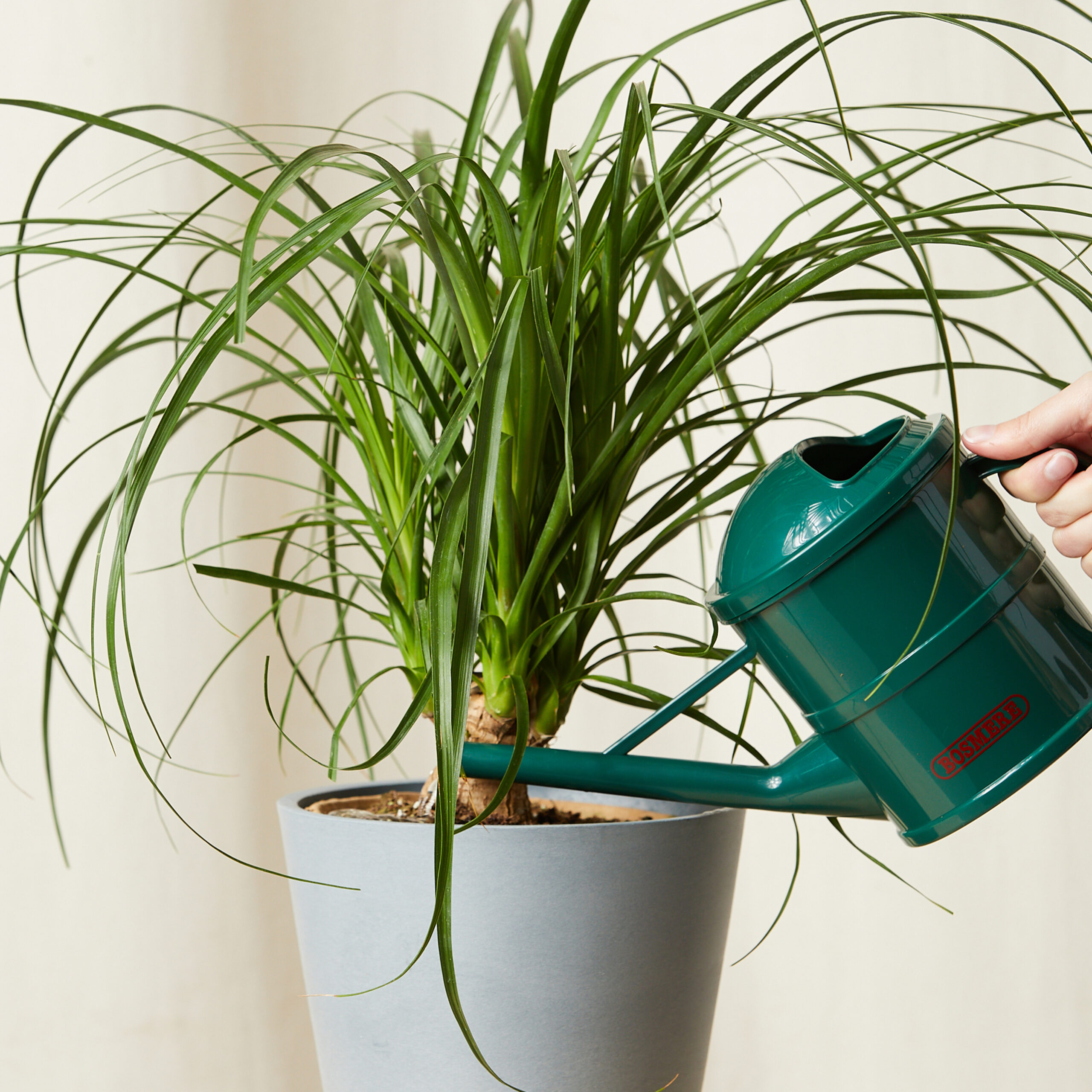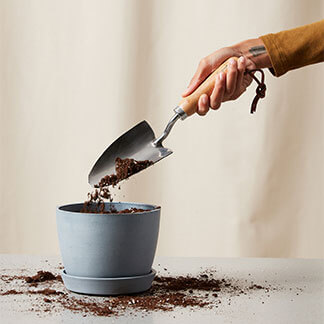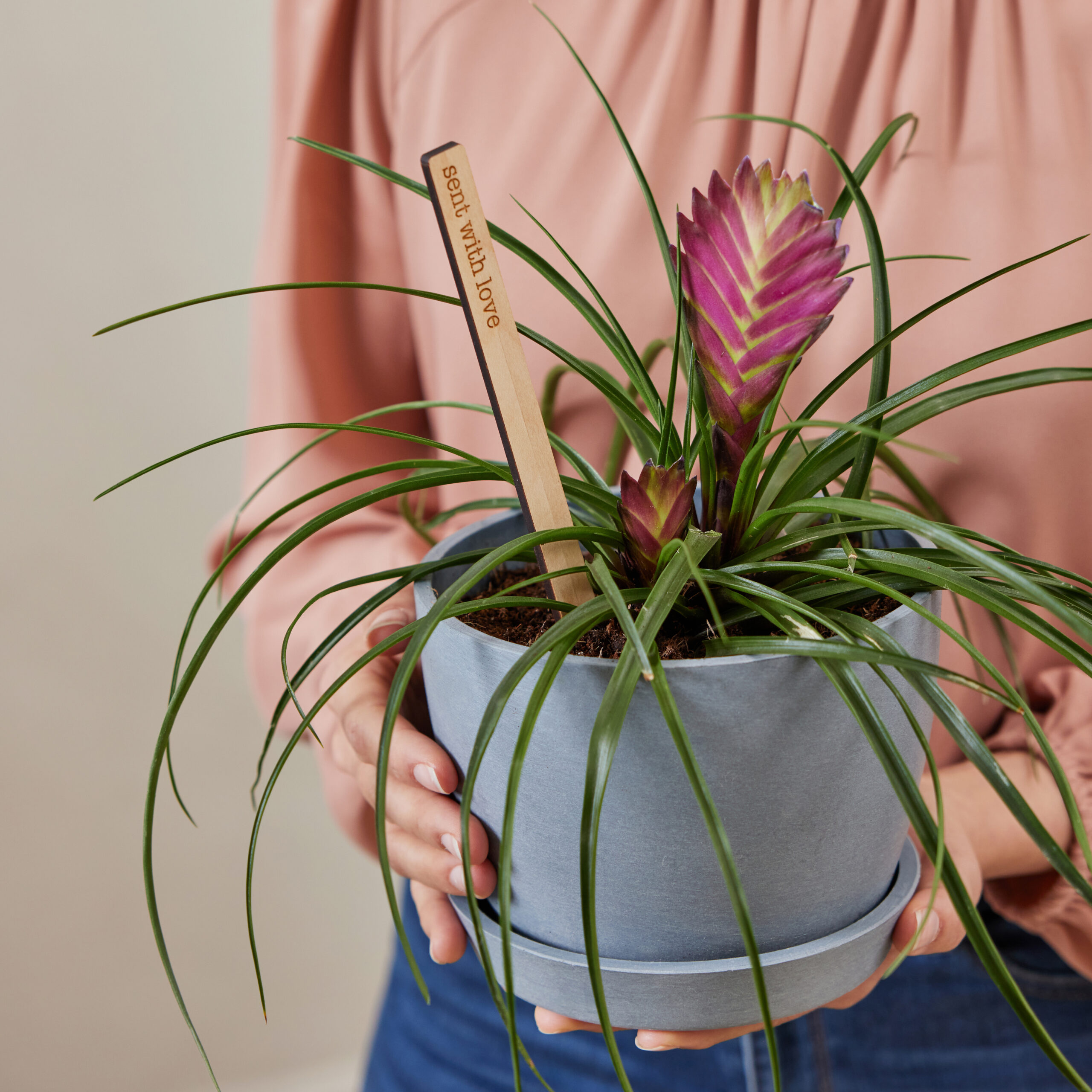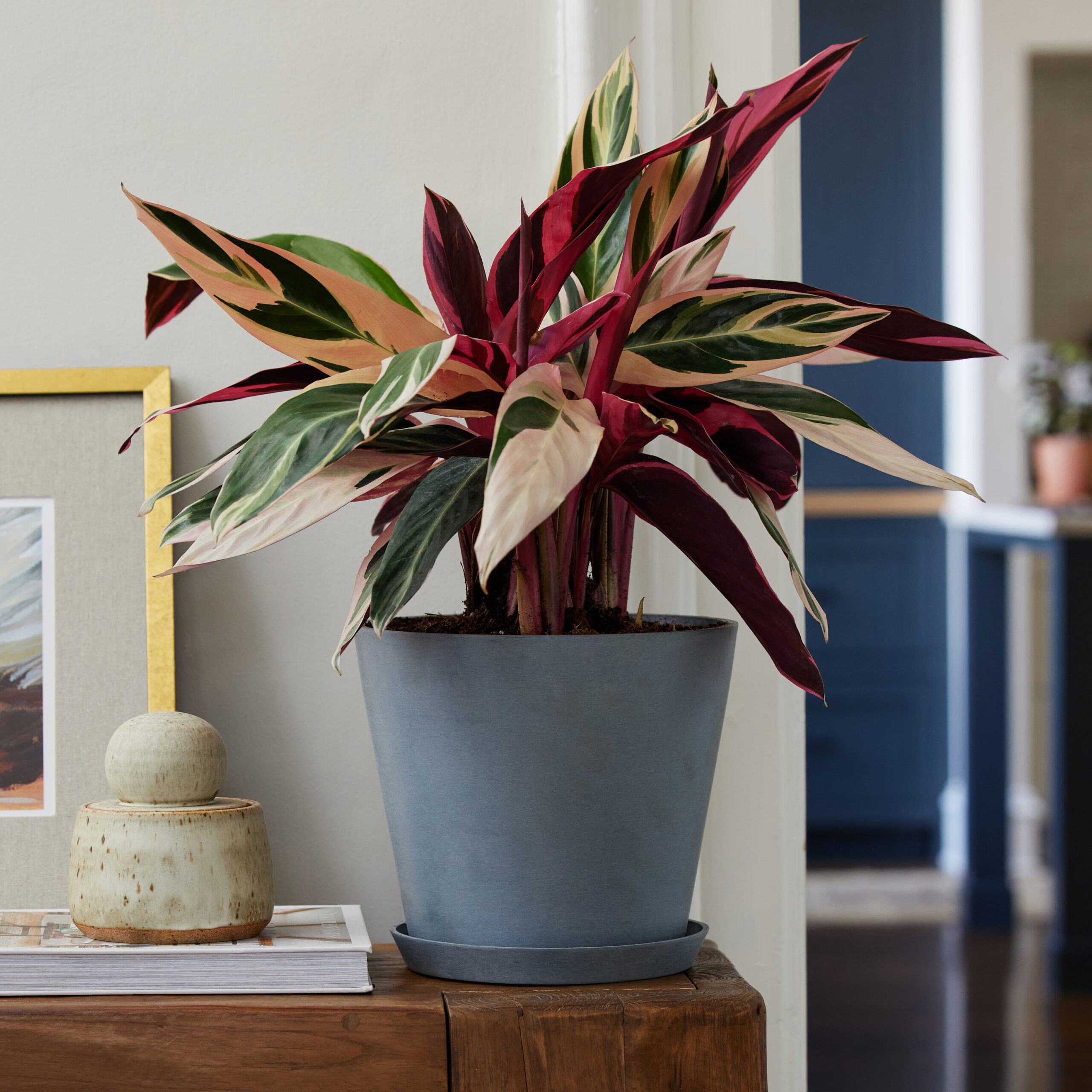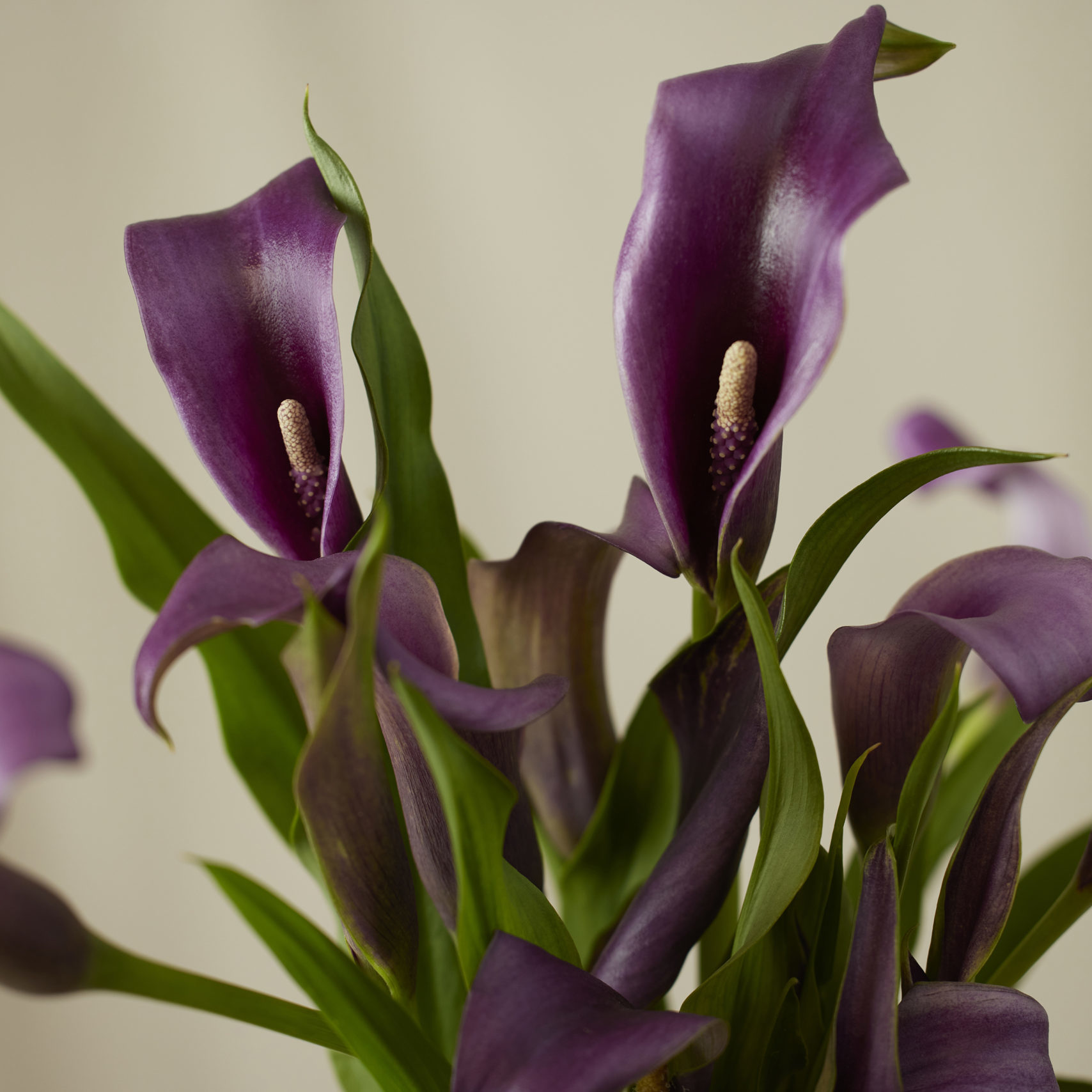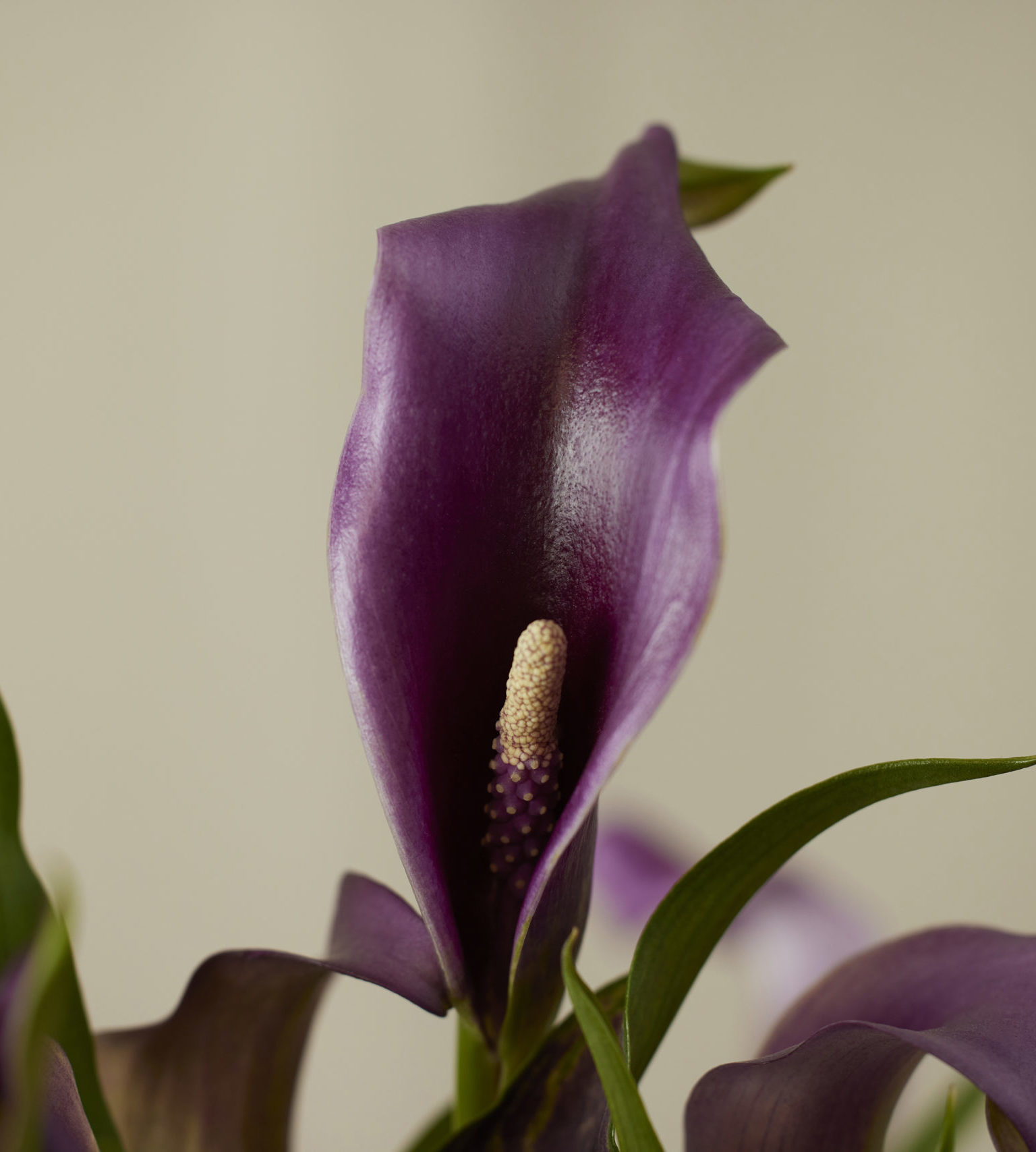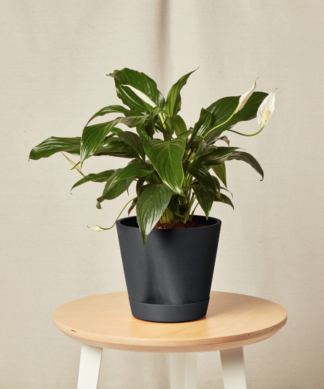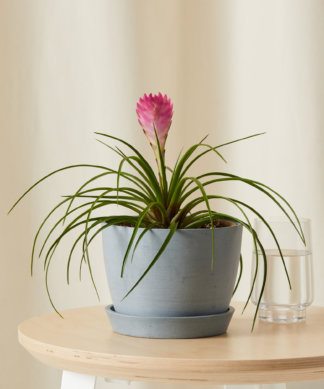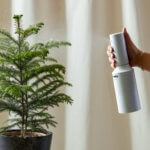How to care for your Calla Lily
Use these instructions to care for a Calla Lily. This guide will tell you how to water a Calla Lily; its light, temperature, humidity preferences and any additional care it might need to help it grow.
Calla Lily
The Calla Lily flourishes under bright, indirect light. While full sun exposure may encourage blooming, you still need to be careful with intense light and heat to prevent the leaves and flowers from turning brown.
Regular watering, about once a week, is the best routine for your Calla Lily. Remember to check the first two inches of the soil for dryness. If it feels dry, then your plant needs water. You can use a watering can to carefully gauge the quantity. As you water, watch the bottom of the pot for liquid flowing out from the drainage holes. From there, pour out the excess water out of the saucer. Another important tip is to keep the soil moist but thoroughly drained since trapped water leads to root rot or fungal growth. And you can reduce the frequency in November as the Calla Lily becomes dormant.
Considering the fact that this plant originated in the wetlands of South Africa, prime Calla Lily care involves adding humidity to the plant’s environment. One way to increase the moisture in the air is to place the pot with your Calla Lily on a tray full of pebbles and water. The nearby evaporation provides just enough humidity for your plant to thrive. Another method involves misting your plant when the air is dry, but be careful not to saturate the soil as this can damage the roots. You might also try keeping a humidifier in the same room as your Calla Lily.
This tropical beauty grows best in 60-80°F. For this reason, the Calla Lily makes an excellent houseplant. However, you would need to keep it away from vents, windows that receive direct, mid-day sunlight, and drafts.
Your Calla Lily requires feeding once a month during the spring and summer months when it’s most active. An all-purpose potting mix that’s diluted in water provides the right amount of nutrients. A good rule to follow is to start out using half the strength of what the instructions call for unless otherwise stated.
The Calla Lily is toxic to pets; thus you’ll need to ensure your plant is kept away from dogs and cats. Or you might consider a more pet-friendly option. Likewise, the Calla Lily cannot be ingested by humans, as it’s quite hazardous. Also, the sap from the stems might irritate skin or eyes upon contact. So keep your plant out of reach of small children.
Prune spent flowers as they appear. If you notice your Calla hasn’t rebloomed during the growing season, it may need more light. Give your Calla a six-week rest during the winter. Lower temperatures, reduced light, and drier soil during this time will encourage dormancy, ultimately helping your plant produce more flowers in the spring and summer.


